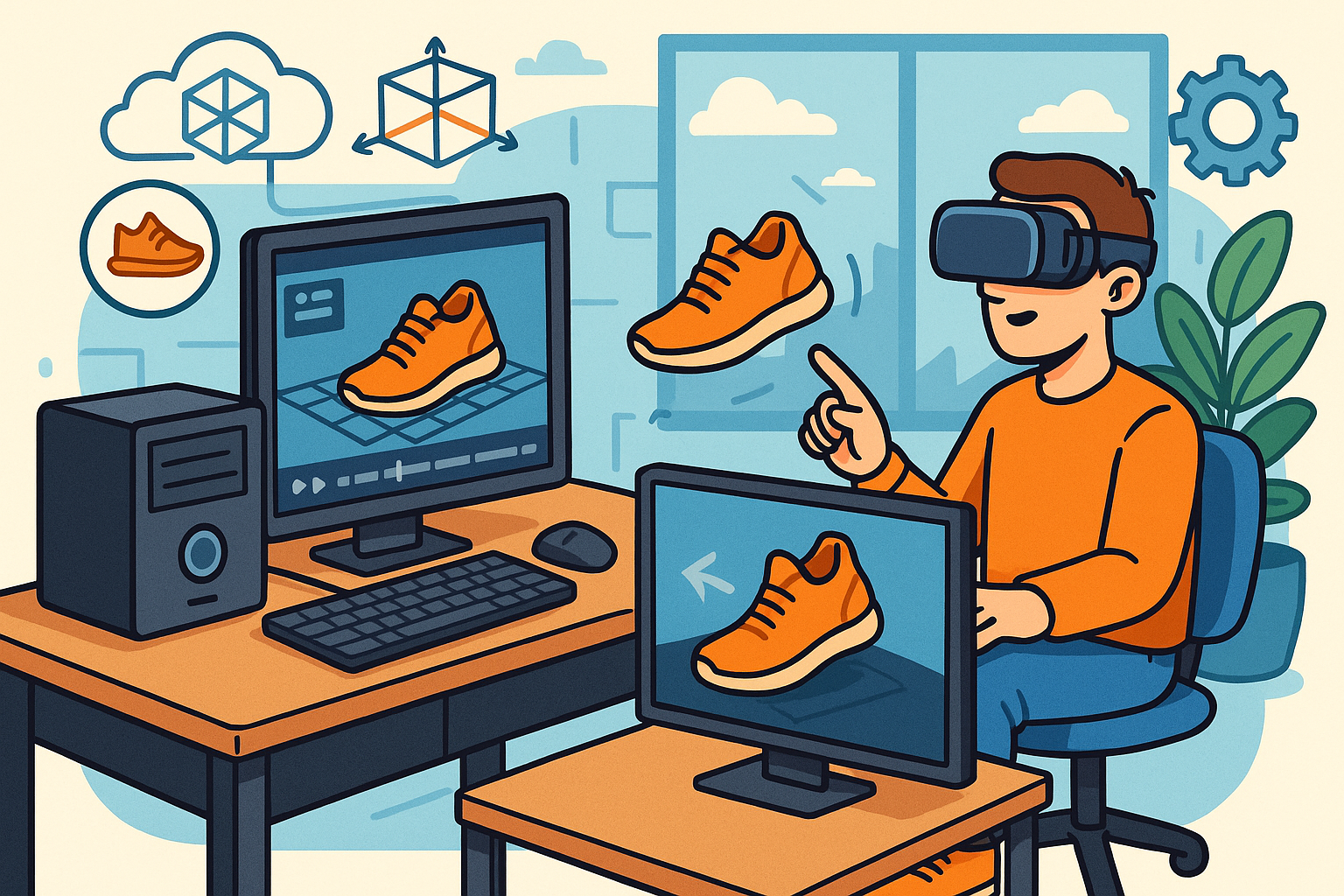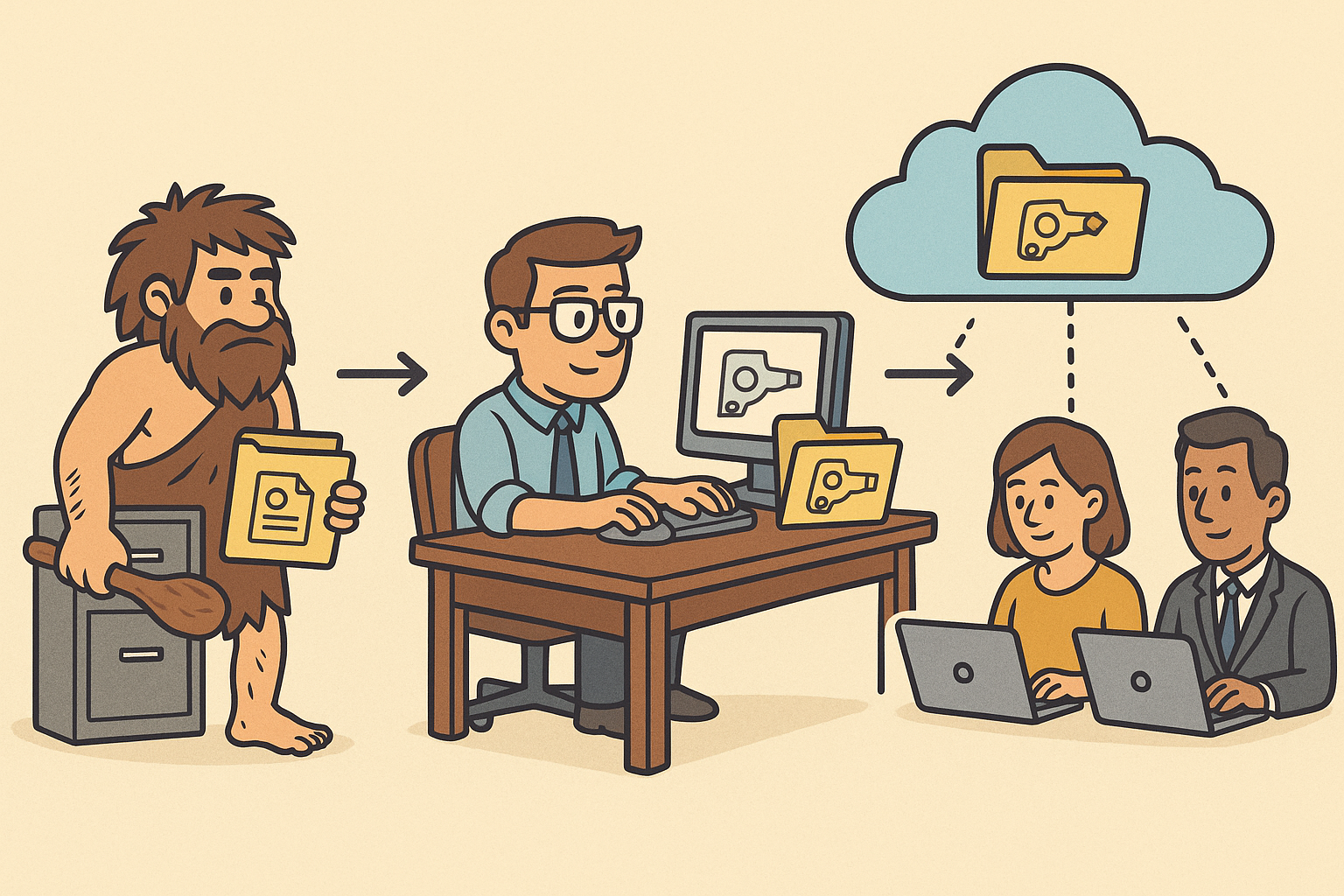Your Cart is Empty
Customer Testimonials
-
"Great customer service. The folks at Novedge were super helpful in navigating a somewhat complicated order including software upgrades and serial numbers in various stages of inactivity. They were friendly and helpful throughout the process.."
Ruben Ruckmark
"Quick & very helpful. We have been using Novedge for years and are very happy with their quick service when we need to make a purchase and excellent support resolving any issues."
Will Woodson
"Scott is the best. He reminds me about subscriptions dates, guides me in the correct direction for updates. He always responds promptly to me. He is literally the reason I continue to work with Novedge and will do so in the future."
Edward Mchugh
"Calvin Lok is “the man”. After my purchase of Sketchup 2021, he called me and provided step-by-step instructions to ease me through difficulties I was having with the setup of my new software."
Mike Borzage
Real-Time 3D Rendering: Transforming Product Visualization with Interactive Immersion
July 25, 2025 7 min read


Introducing Real-Time 3D Rendering in Product Visualization
Real-Time 3D Rendering represents a remarkable shift from traditional visualization methods to interactive, immediate displays of product designs. This technology empowers designers, engineers, and stakeholders alike to experience products in a fully immersive digital environment where changes are visible instantly. In contrast to conventional pre-rendered visuals, which require long processing times and static imagery, real-time rendering enables a dynamic review process that significantly enhances feedback loops and accelerates design iterations. Real-Time 3D Rendering has become an indispensable tool in modern product visualization, offering the ability to simulate light, textures, and materials accurately as modifications are made on the fly. In particular, the incorporation of **interactive visual interfaces** means that users can explore multiple design aspects and perspectives, thereby fostering a more detailed understanding and quicker decision-making when comparing variants or discussing potential design adjustments with clients.
Defining Real-Time 3D Rendering and Its Role
At its core, real-time 3D rendering is the computational process that converts digital models into lifelike images in a matter of moments. Several specific key areas characterize its modern role in product visualization. First, the immediacy in viewing design alterations paves the way for a more agile development process. Second, interactive interfaces that respond to user inputs provide a deeper level of engagement, making it easier for stakeholders to explore design nuances. Finally, as these methods become more sophisticated, they dramatically improve client engagement by enabling stakeholders to interact directly with design elements, verifying features such as ergonomic positioning, material behavior, and lighting nuances, all in real-time. In this light, real-time 3D rendering represents a convergence of speed, accuracy, and creative flexibility. This transformative approach is not merely about delivering a visual representation but about advancing the dialogue between design teams and their clients, where quick iterations and immediate visualization feedback lead to more innovative outcomes. The transformation is visible in every visual element, from realistic material simulation to lifelike reflections, producing **immediate, captivating** visuals that elevate every stage of the design review process.Comparing Traditional Pre-Rendered Visuals with Interactive Visualizations
Traditional pre-rendered images, though capable of delivering high-fidelity results, often suffer from lengthy production cycles that impede rapid decision-making. In contrast, interactive visualizations allow for **immediate visualization** and are particularly useful when exploring multiple design alternatives concurrently. The traditional method typically involves rendering multiple frames, which can be computationally expensive and time-consuming. In modern workflows, the adoption of interactive, real-time rendering bypasses these constraints by integrating advanced algorithms directly within the design software. This leads to a workflow where each alteration is reflected instantaneously, making the iterative process more collaborative and data-driven. Key advantages include the ability to adjust design parameters in real-time, review changes at various lighting conditions, and simulate complex material interactions without the need for multiple render passes. The cumulative effect is a significantly elevated level of accuracy and client confidence. Furthermore, these interactive methods facilitate a more holistic view of the design, as feedback is integrated instantly, fostering improved communication and greater transparency during both internal reviews and client meetings.Breakthrough Technologies and Key Features
The rapid evolution of real-time rendering technologies is supported by a series of breakthrough innovations. Central to these are **GPU acceleration** and parallel computing techniques, which have fundamentally redefined the performance boundaries of rendering engines. Utilizing specialized hardware, industries can now simulate complex physical phenomena such as light reflection, scattering, and refraction, while keeping computational times within interactive limits. Moreover, advanced lighting simulation techniques, including physically-based rendering (PBR), ensure that the simulated visuals adhere strictly to the behavior of light in the natural world, resulting in images that are both aesthetically pleasing and technically accurate. Optimized pipelines enable rapid asset processing, allowing materials and geometries to be updated on the fly as designs evolve. All of these features come together to produce an ecosystem where design professionals can truly rely on their visual tools for everything from concept development to final client presentations.
Core Components of Real-Time 3D Rendering
Several components play pivotal roles in enabling real-time rendering. Among the most notable are:- GPU acceleration and parallel computing techniques: These facilitate rapid computation, essential for rendering complex scenes in real time.
- Advanced lighting simulation and physically-based rendering: They ensure that every visual is not only vivid but also scientifically accurate in its depiction of light, materials, and shadows.
- Optimized pipelines for rapid asset processing: These allow for near-instantaneous updates to design elements, making the iteration process highly efficient.
Integration with Contemporary Design Software
Contemporary design software suites increasingly incorporate real-time rendering capabilities directly into their core functionality. Designers can seamlessly toggle between conventional CAD tools and interactive rendering modules, thereby gaining immediate insights into how design modifications affect the overall product aesthetics. This seamless integration has sparked a paradigm shift in the industry, encouraging a move away from static representations towards more exploratory, interactive environments. Cloud-based solutions further enhance this model, offering scalable performance that is particularly advantageous for handling extensive product libraries or high-resolution assets. The continuous evolution of software optimizations not only reduces computation times but also enhances the overall design experience by offering **instant feedback** and improved digital tool interoperability. This convergence of technologies guarantees that professionals are no longer limited by traditional rendering constraints, thereby unlocking new creative potentials alongside technical accuracy.Industry Benefits and Practical Applications
The application of real-time rendering in product visualization results in numerous tangible benefits across diverse industries. One of the primary advantages is the dramatically accelerated feedback loop, which allows for faster design iterations and ensures that ideas can be quickly validated or revised based on interactive reviews. This immediacy is essential in fast-paced sectors, such as consumer electronics or automotive design, where rapid prototyping and iterative refinement dictate competitive advantage. In addition to speed, real-time rendering significantly improves collaboration among design teams and stakeholders by making the design review process more interactive. This means that teams, irrespective of their geographical distribution, can engage in synchronized reviews, making critical design decisions more inclusive and informed. Enhanced visualizations also elevate marketing and sales presentations by providing lifelike, engaging visuals that clearly communicate the product’s value proposition to external audiences.
Enhancing Collaboration and Decision-Making
In practice, industries witness a range of benefits when real-time rendering is integrated into their workflows. Some of the most compelling advantages include:- Accelerated feedback loops: Designers can quickly gauge the impact of design changes, thereby reducing the time spent on revisions and enhancing overall productivity.
- Improved collaboration: Interactive reviews foster a shared understanding among designers, engineers, and decision-makers, as everyone can visualize and discuss real-time modifications.
- Enhanced marketing presentations: Realistic and dynamic visuals capture client interest and convey complex product features more effectively.
Practical Applications Across Industries
Real-time rendering is not confined to one sector alone but has found consistently favorable applications across multiple fields, including:- Consumer electronics: Where the fast-paced nature of design requires immediate visual feedback during rapid iterations.
- Automotive design: Which benefits from the ability to view and adjust complex surfaces and curves in real time.
- Architectural modeling: That uses interactive, photorealistic simulations to communicate design intent and spatial dynamics effectively.
Conclusion
Real-Time 3D Rendering has unequivocally revolutionized the field of product visualization. By integrating high-speed graphics processing, advanced lighting simulation, and cloud-based computational strategies, the technology merges speed, accuracy, and creative flexibility into one harmonious process. Its ability to deliver **lively, interactive** visual experiences transforms design reviews from static presentations into dynamic, collaborative sessions that drive innovation and accelerate decision-making. The journey from traditional pre-rendered imagery to real-time, interactive visualization embodies a critical evolution in how products are conceived, refined, and validated.
Future Trends and Strategic Adaptation
Looking ahead, the evolution of real-time rendering appears set to intensify with deeper integration of augmented reality, virtual reality, and machine learning. These advances promise not only to enhance visual fidelity but also to automate aspects of the design optimization process, ensuring that products meet both aesthetic and functional standards with minimal manual intervention. Design software developers are thus encouraged to experiment with these innovations, continually adapting their tools to keep pace with emerging trends. In the same vein, end users must maintain a proactive stance in upgrading their skills and infrastructure to fully harness the power of interactive, rapid visualization. The synergy between **advanced rendering** technologies and the creative insights of design professionals is likely to lead to even more stunning, efficient, and market-ready products in the future.Final Reflections
In summation, the adoption of real-time 3D rendering technologies has spawned a pivotal transformation in the way modern product designs are visualized and communicated. Through accelerated iterations, enhanced stakeholder collaboration, and strikingly realistic interactive presentations, the industry has entered a new era where speed and precision are paramount. As developers and practitioners continue to experiment with and integrate these cutting-edge tools, the potential for innovation will only grow. This dynamic environment mandates a continuous reexamination of workflows to secure a competitive advantage and to remain at the forefront of visual and technical excellence. Embracing these advanced processes not only helps meet client expectations but also sets the stage for the next generation of product innovation.Also in Design News

Parametric Design Evolution: From Static CAD to Intelligent Modeling
August 24, 2025 8 min read
Read More
Cinema 4D Tip: Enhancing Animated Transitions in Cinema 4D with the Shader Effector
August 24, 2025 3 min read
Read MoreSubscribe
Sign up to get the latest on sales, new releases and more …



